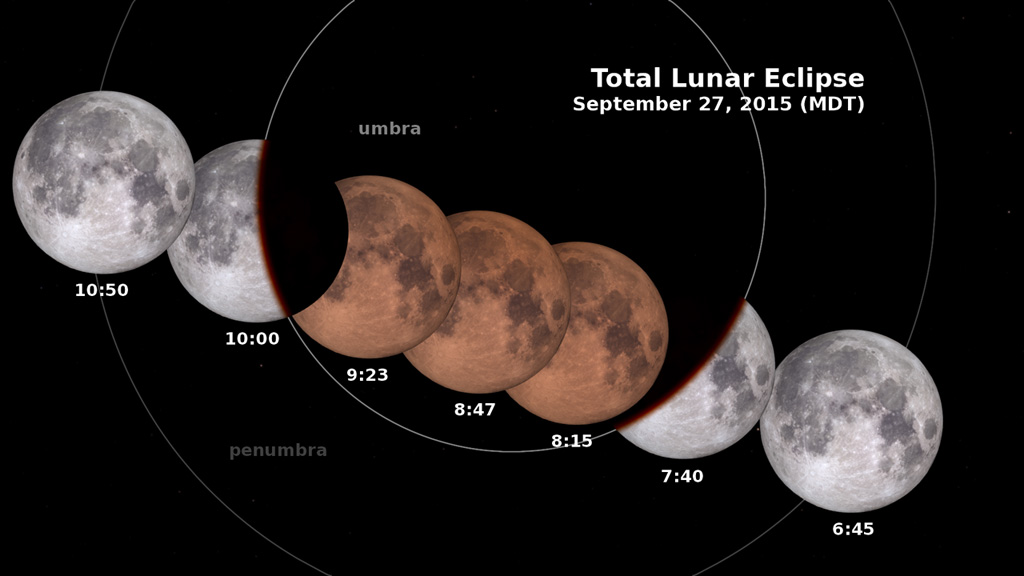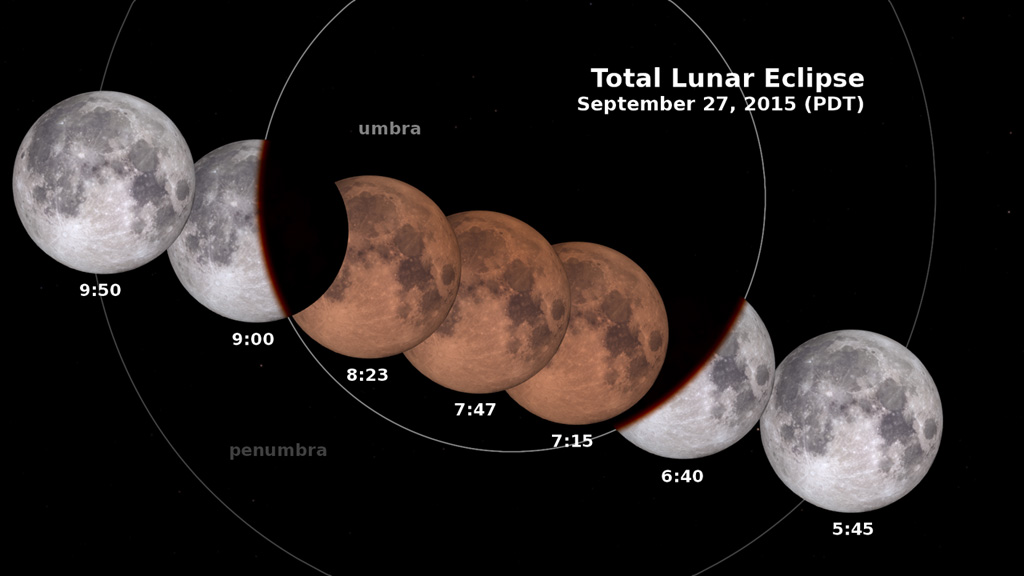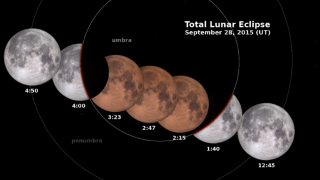Planets and Moons
ID: 11931

On the night of September 27, 2015, the moon will enter Earth’s shadow, creating a total lunar eclipse. During a total lunar eclipse, the moon's surface is illuminated by filtered sunlight passing through Earth’s atmosphere. This results in the moon turning a ghostly copper color. The effect lasts as long as the moon is within Earth’s central shadow called the umbra. On this particular occasion the effect will last for over an hour. All of South America and most of North and Central America will be able to see the entire eclipse, while those farther out west will see it in progress at moonrise. The event is the last of four visible eclipses in the Western Hemisphere in a span of 18 months. The next total lunar eclipse will take place in January 2018. Watch the video to see the changing appearance of the moon as it travels into and out of Earth’s shadow during the event.




Total Lunar Eclipse





Related Stories
Story Credits
Lead Visualizer/Animator:
Ernie Wright (USRA)
Producers:
David Ladd (USRA)
Michelle Handleman (USRA)
Scientists:
John Keller (NASA/GSFC)
Noah Petro (NASA/GSFC)
Lead Writer:
Ernie Wright (USRA)
Ernie Wright (USRA)
Producers:
David Ladd (USRA)
Michelle Handleman (USRA)
Scientists:
John Keller (NASA/GSFC)
Noah Petro (NASA/GSFC)
Lead Writer:
Ernie Wright (USRA)
Please give credit for this item to:
NASA's Scientific Visualization Studio
NASA's Scientific Visualization Studio
Short URL to share this page:
https://svs.gsfc.nasa.gov/11931
Keywords:
SVS >> App
NASA Science >> Planets and Moons
https://svs.gsfc.nasa.gov/11931
Keywords:
SVS >> App
NASA Science >> Planets and Moons









